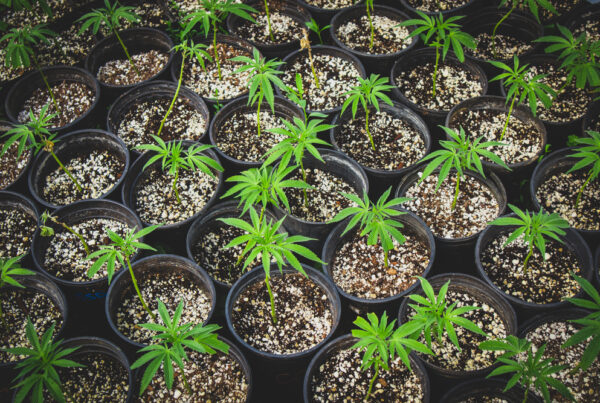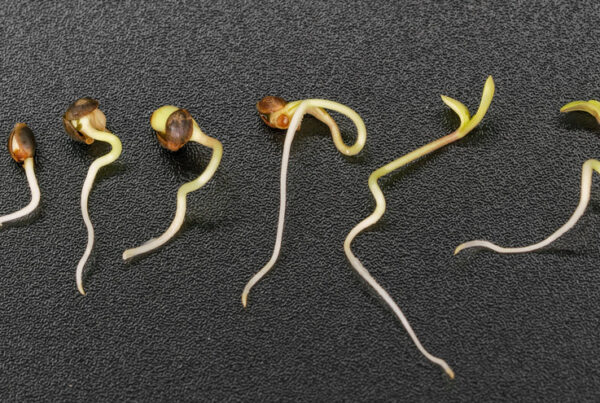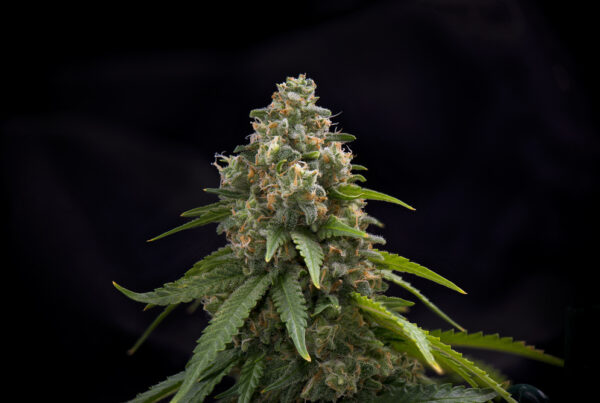Post-traumatic stress disorder (PTSD) is a mental health condition that affects millions of people around the world. It is often caused by experiencing or witnessing a traumatic event such as combat, sexual assault, natural disasters, or accidents. Those with PTSD may experience symptoms such as flashbacks, nightmares, severe anxiety, and depression, which can significantly impact their daily lives.
While traditional treatment methods such as therapy and medication have proven to be effective for many individuals, there is growing interest in exploring alternative approaches, including the use of cannabis. Cannabis, also known as marijuana, has long been associated with various health benefits, including pain relief, relaxation, and mood elevation.
In recent years, researchers have started to investigate the potential relationship between cannabis and PTSD. This blog post will delve into the topic, providing a comprehensive understanding of how cannabis may impact individuals with PTSD.
First, we will explore the basics of PTSD, including its definition and common symptoms. Understanding the nature of this condition is crucial for comprehending how cannabis can potentially play a role in its treatment.
Next, we will dive into the world of cannabis, discussing what it is and how it affects the brain. By understanding the science behind cannabis, we can better grasp its potential therapeutic properties.
Then, we will examine the connection between cannabis and PTSD, exploring how cannabis can potentially help alleviate the symptoms of PTSD. We will delve into scientific studies that have been conducted in this area and discuss the findings and limitations.
It is important to note that while cannabis may offer potential benefits, there are also potential risks and side effects to consider. We will explore these factors, ensuring a balanced and informed perspective on the topic.
Additionally, we will touch upon the legal and medical considerations surrounding cannabis use for PTSD. This includes discussing the current legal status of cannabis in various jurisdictions and the medical recommendations for its use.
Lastly, we will conclude by discussing the future of cannabis as a potential treatment option for PTSD. As more research is conducted and societal attitudes towards cannabis evolve, it is essential to consider the possibilities and challenges that lie ahead.
By the end of this blog post, readers will gain a comprehensive understanding of the relationship between cannabis and PTSD. It is important to note that this information is intended for educational purposes only and should not substitute professional medical advice. If you or someone you know is struggling with PTSD, it is crucial to seek proper guidance from healthcare professionals.

Introduction: Understanding PTSD and the Role of Cannabis
Post-traumatic stress disorder (PTSD) is a mental health condition that can develop after experiencing or witnessing a traumatic event. It is characterized by a range of symptoms that can significantly impact a person’s daily functioning and overall well-being. In this section, we will delve into the basics of PTSD, including its definition and common symptoms. Additionally, we will explore traditional treatment methods for PTSD and set the stage for understanding the potential role of cannabis in managing this condition.
What is PTSD?
PTSD is a psychiatric disorder that can develop in individuals who have experienced or witnessed a traumatic event. Such events may include combat, sexual assault, natural disasters, accidents, or any other situation that poses a threat to one’s life or safety. It is important to note that not everyone who experiences a traumatic event will develop PTSD, as individual responses can vary.
Common Symptoms of PTSD
PTSD is characterized by a range of symptoms that can be categorized into four main clusters: intrusion, avoidance, negative alterations in mood and cognition, and alterations in arousal and reactivity.
- Intrusion Symptoms: These symptoms involve recurrent and distressing memories, flashbacks, or nightmares related to the traumatic event. Individuals may experience intrusive thoughts or images that cause significant distress.
- Avoidance Symptoms: People with PTSD often try to avoid anything that reminds them of the traumatic event. This can include avoiding specific places, people, activities, or even discussing the event itself. Avoidance symptoms can interfere with social relationships and daily functioning.
- Negative Alterations in Mood and Cognition: PTSD can lead to negative changes in a person’s thinking patterns and emotional state. Individuals may experience persistent negative beliefs or expectations about themselves, others, or the world. They may also have difficulty experiencing positive emotions and may feel detached from loved ones.
- Alterations in Arousal and Reactivity: Individuals with PTSD may display heightened arousal and reactivity. This can manifest as irritability, anger outbursts, difficulty concentrating, hypervigilance, and an exaggerated startle response. Sleep disturbances are also common, including insomnia or having nightmares.
Traditional Treatment Methods for PTSD
Traditionally, PTSD has been treated through a combination of psychotherapy, medication, and support from healthcare professionals. Some common treatment approaches include:
- Cognitive-Behavioral Therapy (CBT): CBT helps individuals identify and challenge negative thoughts and beliefs related to the traumatic event. It aims to modify unhelpful thinking patterns and develop healthier coping strategies.
- Eye Movement Desensitization and Reprocessing (EMDR): EMDR involves a series of eye movements or other forms of bilateral stimulation that help individuals process distressing memories and reduce their impact.
- Medication: Antidepressant medications, such as selective serotonin reuptake inhibitors (SSRIs), may be prescribed to help manage symptoms of depression, anxiety, and sleep disturbances commonly associated with PTSD.
- Support Groups: Participating in support groups or connecting with others who have experienced similar traumas can provide a sense of validation, support, and understanding.
While these traditional treatment methods have proven to be effective for many individuals, there is a growing interest in exploring alternative approaches, including the use of cannabis. In the following sections, we will delve into the world of cannabis, its potential effects on the brain, and how it may be utilized as a treatment method for individuals with PTSD.
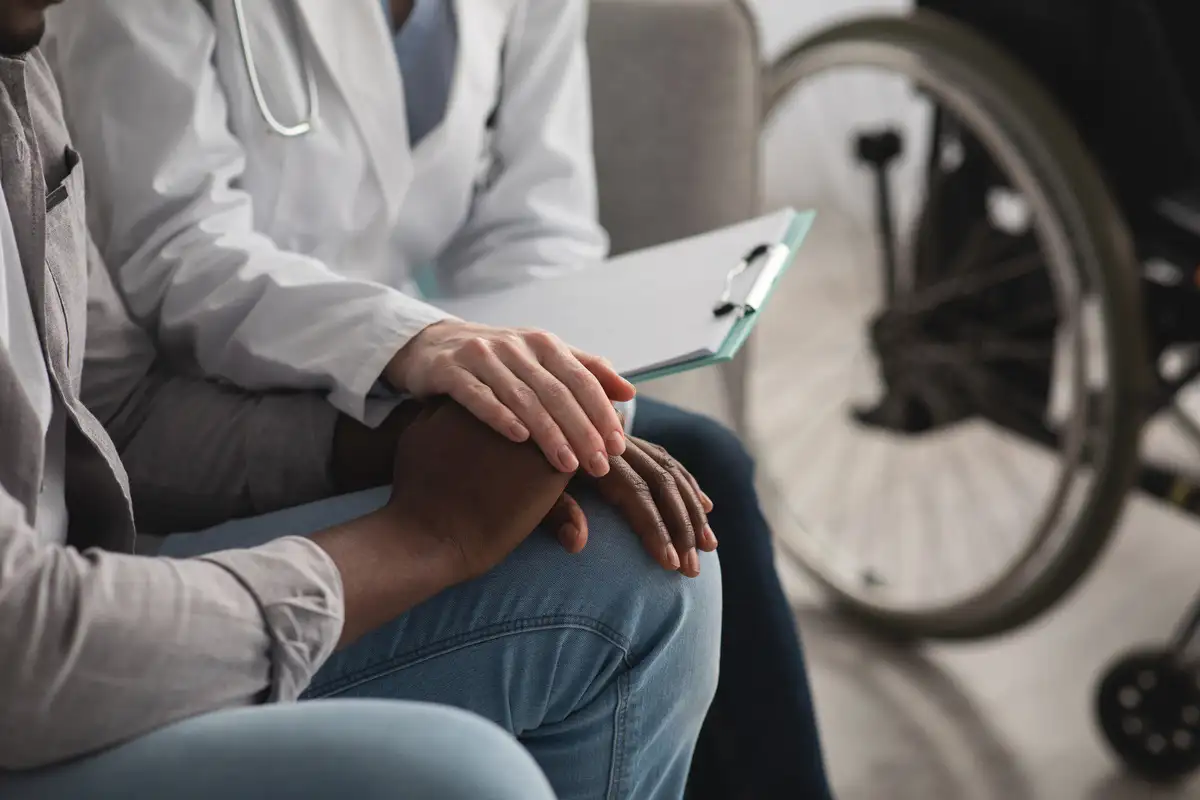
Understanding PTSD
Post-traumatic stress disorder (PTSD) is a complex mental health condition that can have a profound impact on an individual’s life. In this section, we will explore the various aspects of PTSD, including its definition, the potential causes, and the factors that contribute to its development. By understanding the nature of PTSD, we can better comprehend the potential benefits and challenges of utilizing cannabis as a treatment option.
What is PTSD?
PTSD is a psychiatric disorder that can develop following the experience or witnessing of a traumatic event. It is important to note that not everyone who goes through a traumatic experience will develop PTSD. The condition is characterized by a range of symptoms that persist for an extended period of time, often months or even years, and significantly disrupt daily functioning.
Causes of PTSD
PTSD can be caused by a wide range of traumatic events. Some common triggers include:
- Combat and Military Service: Military personnel who have been exposed to combat situations or have experienced other traumatic events during their service are at an increased risk of developing PTSD.
- Physical or Sexual Assault: Survivors of physical or sexual assault, including domestic violence or childhood abuse, may develop PTSD as a result of the traumatic experience.
- Natural Disasters: Individuals who have experienced natural disasters such as earthquakes, hurricanes, or floods can develop PTSD due to the overwhelming and life-threatening nature of these events.
- Accidents: Being involved in a serious accident, such as a car crash or a workplace incident, can also trigger PTSD symptoms.
- Medical Trauma: Patients who have undergone traumatic medical procedures, received a life-threatening diagnosis, or experienced life-threatening complications may develop PTSD.
Risk Factors for Developing PTSD
While anyone can develop PTSD after a traumatic event, certain factors may increase the likelihood of its development. These risk factors include:
- Previous Trauma: Individuals who have previously experienced traumatic events may be more susceptible to developing PTSD following subsequent traumas.
- Lack of Social Support: Limited social support systems, including a lack of close relationships or a weak support network, can contribute to the development of PTSD.
- Pre-existing Mental Health Conditions: Individuals with pre-existing mental health conditions, such as anxiety or depression, may be at a higher risk of developing PTSD after a traumatic event.
- Intensity and Duration of Trauma: The severity and duration of the traumatic event can impact the likelihood of developing PTSD. Prolonged exposure to trauma or repeated traumatic experiences can increase the risk.
- Personal Factors: Individual factors such as age, gender, and genetic predispositions may also influence the development of PTSD.
Understanding the various causes and risk factors associated with PTSD is crucial for identifying those who may be at a higher risk and for developing appropriate treatment strategies. In the next section, we will explore the traditional treatment methods commonly used for individuals with PTSD.
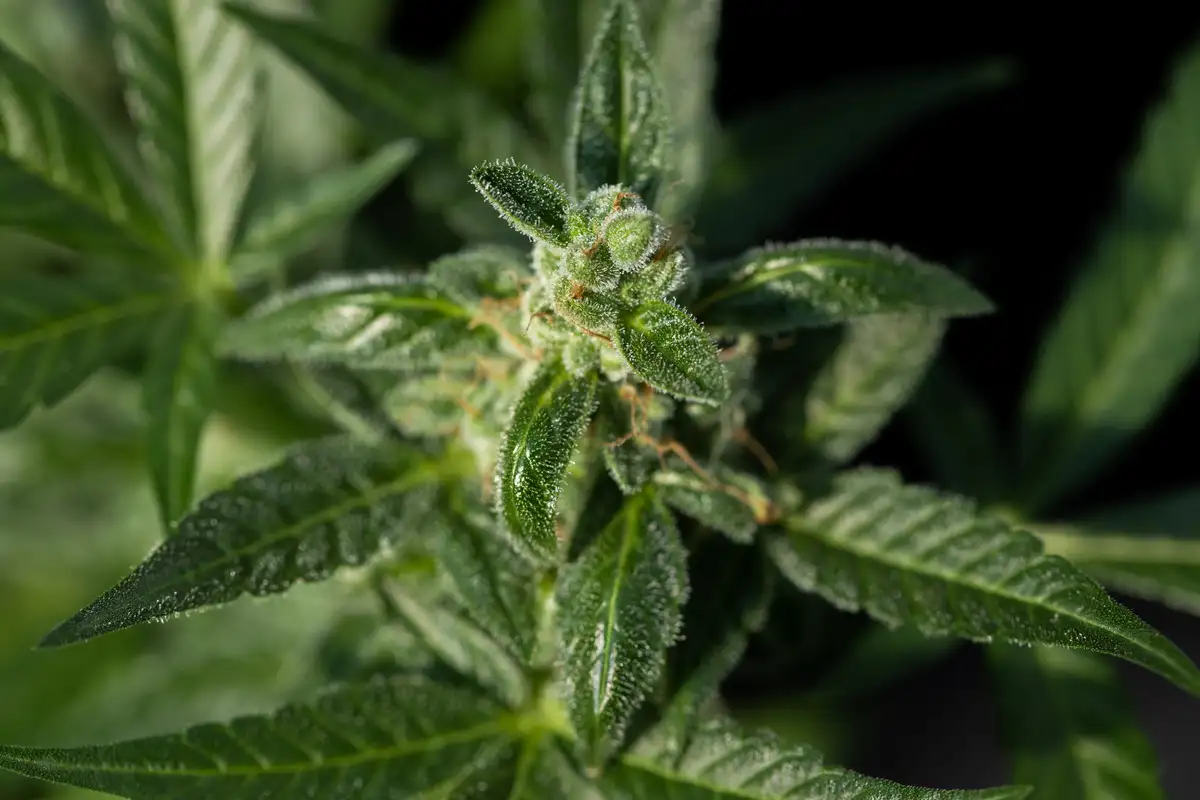
Understanding Cannabis
In this section, we will explore the world of cannabis, providing an overview of what it is, how it affects the brain, and its potential as a treatment method for various conditions, including PTSD. Understanding the basics of cannabis is essential for comprehending its potential role in managing PTSD symptoms.
What is Cannabis?
Cannabis, also known as marijuana, is a plant that contains numerous chemical compounds called cannabinoids. The two most well-known cannabinoids are delta-9-tetrahydrocannabinol (THC) and cannabidiol (CBD). THC is primarily responsible for the psychoactive effects of cannabis, while CBD is known for its potential therapeutic properties.
Cannabis is typically consumed in various forms, including smoking, vaporizing, or ingesting it in edibles or tinctures. It is important to note that the legality of cannabis and its consumption can vary depending on the jurisdiction.
How Cannabis Affects the Brain
The cannabinoids in cannabis interact with the endocannabinoid system (ECS) in the brain, which plays a crucial role in regulating various physiological processes such as mood, appetite, pain sensation, and sleep. THC binds to cannabinoid receptors in the brain, primarily in the areas associated with memory, cognition, pleasure, and coordination. This interaction leads to the psychoactive effects commonly associated with cannabis use.
CBD, on the other hand, does not produce the same psychoactive effects as THC but has been found to interact with other receptors in the brain, such as serotonin and vanilloid receptors. These interactions are believed to contribute to its potential therapeutic effects, including anti-anxiety, anti-inflammatory, and analgesic properties.
Cannabis as a Treatment Method
Cannabis has been used for various medicinal purposes throughout history, and its potential therapeutic benefits are gaining recognition in the medical community. The use of cannabis as a treatment method is growing in popularity, especially for conditions that are difficult to manage with traditional approaches.
In recent years, researchers have been studying the potential benefits of cannabis for a wide range of medical conditions, including chronic pain, epilepsy, multiple sclerosis, and mental health disorders such as anxiety and depression. The potential of cannabis as a treatment method for PTSD is also being explored.
It is important to note that the use of cannabis as a treatment method should be approached with caution and under the guidance of healthcare professionals. The varying concentrations of THC and CBD in different strains of cannabis, as well as individual differences in response, can influence the effects and potential risks associated with its use.
In the next section, we will delve into the specific relationship between cannabis and PTSD, exploring how cannabis may potentially alleviate the symptoms of PTSD and the scientific evidence supporting its use in this context.

Cannabis and PTSD: The Connection
In this section, we will explore the connection between cannabis and PTSD, specifically focusing on how cannabis may help alleviate the symptoms of PTSD. We will delve into scientific studies that have been conducted in this area, discuss the potential benefits of cannabis, and address any limitations or concerns associated with its use.
How Cannabis Can Help PTSD Symptoms
- Anxiety and Hyperarousal: One of the hallmark symptoms of PTSD is heightened anxiety and hyperarousal. Cannabis has been reported to have anxiolytic properties, meaning it can help reduce anxiety levels and promote a sense of relaxation. This may be beneficial for individuals with PTSD who experience constant feelings of nervousness or agitation.
- Sleep Disturbances: Many individuals with PTSD struggle with sleep disturbances, such as insomnia or nightmares. Cannabis has been reported to have sedative effects, which may aid in improving sleep quality and reducing the frequency and intensity of nightmares.
- Fear Extinction and Memory Consolidation: PTSD is often characterized by intrusive and distressing memories of the traumatic event. There is evidence to suggest that cannabinoids, particularly THC, may play a role in fear extinction and memory consolidation processes. By modulating memory formation and retrieval, cannabis might help individuals with PTSD process and reduce the impact of traumatic memories.
- Pain Relief: Some individuals with PTSD may experience chronic pain as a result of their trauma or associated conditions. Cannabis, particularly strains rich in CBD, has been recognized for its potential analgesic properties and may provide relief from pain symptoms.
Scientific Studies on Cannabis and PTSD
While research on cannabis and PTSD is still in its early stages, there have been several studies conducted to investigate its potential benefits. These studies have provided preliminary evidence suggesting that cannabis may indeed offer therapeutic effects for individuals with PTSD. However, it is important to note that more research is needed to fully understand the mechanisms and long-term effects of cannabis use in this context.
Potential Risks and Side Effects
As with any treatment method, it is crucial to consider the potential risks and side effects associated with cannabis use. Some potential concerns include:
- Psychological Effects: Cannabis use, particularly high THC strains, can induce temporary psychotropic effects such as anxiety, paranoia, or cognitive impairment. These effects may be more pronounced in individuals with pre-existing mental health conditions.
- Dependence and Addiction: Cannabis has the potential for dependence and addiction, particularly with heavy or prolonged use. It is important to use cannabis responsibly and to be aware of the potential risks of developing a substance use disorder.
- Interaction with Medications: Cannabis may interact with certain medications, including sedatives, antipsychotics, and antidepressants. It is essential to consult with a healthcare professional to ensure there are no harmful interactions between cannabis and other medications.
- Legal Considerations: The legal status of cannabis varies from country to country and even within different regions. It is important to be aware of the laws and regulations regarding cannabis use in your jurisdiction.
In the next section, we will explore the legal and medical considerations surrounding cannabis use for individuals with PTSD, including the current legal status of cannabis and the medical recommendations for its use.
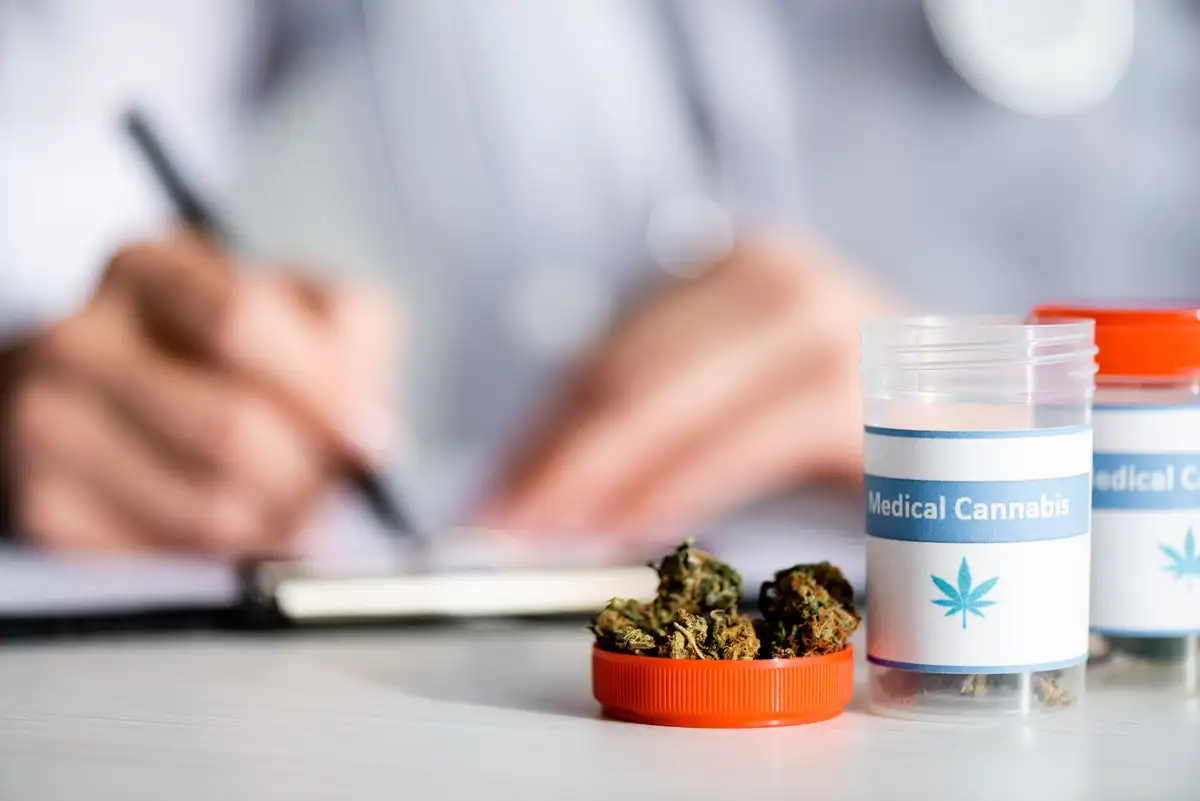
Legal and Medical Considerations
In this section, we will delve into the legal and medical considerations surrounding the use of cannabis for individuals with PTSD. Understanding the legal status of cannabis and the medical recommendations is crucial for making informed decisions and seeking appropriate guidance.
The Legal Status of Cannabis
The legal status of cannabis varies across different countries and even within different regions of the same country. While some jurisdictions have legalized the recreational and/or medicinal use of cannabis, others strictly prohibit its use. It is important to familiarize oneself with the laws and regulations specific to the location in which one resides or intends to use cannabis.
It is worth noting that even in areas where cannabis is legal, there may still be restrictions and regulations in place regarding purchase, possession, cultivation, and consumption. These laws are subject to change, so it is essential to stay updated and comply with the current legal requirements.
Medical Recommendations for Cannabis Use
In some jurisdictions where cannabis is legal, medical professionals may recommend its use for certain medical conditions, including PTSD. However, it is important to remember that medical recommendations for cannabis use vary among healthcare providers and depend on factors such as the patient’s individual circumstances and the availability of other treatment options.
If you are considering using cannabis for PTSD, it is crucial to consult with a healthcare professional who is knowledgeable about cannabis and its potential benefits and risks. They can provide personalized guidance based on your specific needs and medical history.
How to Seek Professional Help
If you are struggling with PTSD and considering cannabis as a potential treatment option, it is essential to seek professional help and guidance. Here are some steps to take:
- Consult with a Mental Health Professional: Reach out to a mental health professional, such as a psychiatrist or psychologist, who specializes in trauma and PTSD. They can assess your symptoms, provide a diagnosis, and recommend appropriate treatment options, including the potential use of cannabis.
- Discuss Cannabis with Your Healthcare Provider: If you are interested in using cannabis for PTSD, have an open and honest discussion with your healthcare provider. They can provide information about the potential benefits, risks, and any legal considerations specific to your location.
- Follow Legal and Medical Guidelines: If cannabis is legal in your jurisdiction and your healthcare provider recommends its use, ensure that you adhere to the legal guidelines and medical recommendations. This may include obtaining a medical cannabis card, purchasing from licensed dispensaries, and using cannabis responsibly.
- Regularly Monitor and Evaluate: As with any treatment method, it is important to regularly monitor and evaluate the effects of cannabis on your PTSD symptoms. Communicate with your healthcare provider and make any necessary adjustments to your treatment plan based on your progress and experiences.
Remember, seeking professional help is crucial to ensure the best possible outcome for managing PTSD. Healthcare professionals can provide guidance, monitor your progress, and help you navigate the complexities of using cannabis as a treatment option.
In the final section, we will conclude our exploration by discussing the future of cannabis as a potential treatment option for PTSD and summarizing the key points discussed throughout this blog post.
Conclusion: The Future of Cannabis for PTSD Treatment
In conclusion, the relationship between cannabis and PTSD is a complex and evolving topic. While traditional treatment methods for PTSD have proven to be effective, there is growing interest in exploring alternative approaches, including the use of cannabis.
Understanding the basics of PTSD, such as its definition and common symptoms, is crucial for comprehending how cannabis may impact individuals with this condition. Additionally, gaining knowledge about cannabis, including its components and how it affects the brain, provides a foundation for understanding its potential therapeutic properties.
Research suggests that cannabis may help alleviate symptoms commonly associated with PTSD, such as anxiety, hyperarousal, sleep disturbances, and intrusive memories. However, it is important to note that the scientific evidence is still limited, and more research is needed to fully understand the efficacy, safety, and long-term effects of cannabis use for individuals with PTSD.
When considering the use of cannabis for PTSD, it is important to be aware of the potential risks and side effects, such as psychological effects, dependence, and drug interactions. Consulting with a healthcare professional who is knowledgeable about cannabis and PTSD is essential for making informed decisions and receiving appropriate guidance.
Legal considerations also play a significant role, as the legality of cannabis varies from jurisdiction to jurisdiction. Understanding the laws and regulations specific to your location is crucial to ensure compliance and avoid legal consequences.
The future of cannabis as a potential treatment option for PTSD is promising. Continued research and scientific advancements will contribute to a better understanding of its efficacy and safety. As societal attitudes toward cannabis evolve, it is likely that more comprehensive studies will be conducted, providing further insights into its potential benefits and limitations.
It is important to remember that this blog post is intended for educational purposes only and should not replace professional medical advice. If you or someone you know is struggling with PTSD, it is essential to seek guidance from qualified healthcare professionals who can provide personalized treatment recommendations.
In conclusion, while cannabis shows promise as a potential treatment option for PTSD, further research, legal considerations, and professional guidance are necessary to fully understand its role in managing this complex condition.




